So, you are over a year into working from home. After being thrown into the fray, have you really stopped to consider the best way an office should work for your body? Sitting fatigue is all too common a problem. Therefore, here are some products you may or may not have considered to help your posture and your mood! If you feel better, you will work better! 😊 There are a multitude of options for work from home so it can feel rather daunting which desk, chair, and accessories to pick that best suits your needs. We are here to break it down and make it easy. No need to stress about what you will be standing and/or sitting on for 8+ hours a day.
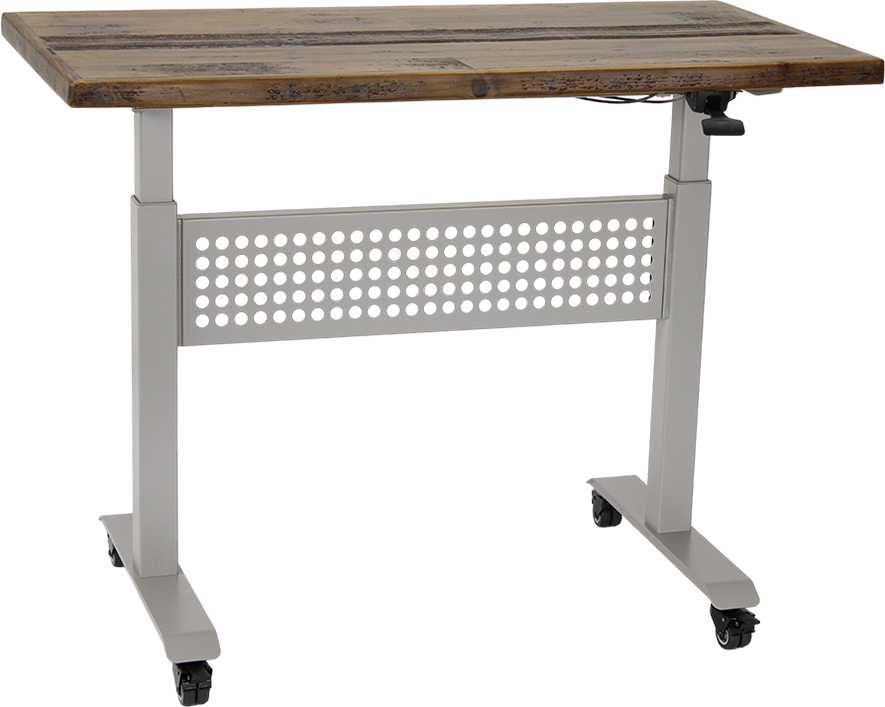
Stand up desks are all the rage. You maybe asking yourself, “Do I REALLY need one? In other words, will it help me THAT much? The answer is YES! Standing a little more each day burns extra calories, tones muscles, improves posture, increases blood flow and ramps up the metabolism. Studies have shown that after a meal, blood sugar levels return to normal faster on days a person spends more time standing. Who does not want to burn calories without even trying? I know I do!
Standing desks also help to reduce shoulder and back pain. According to the 2007 OE Medicine Journal, back and neck pain are cited as the most-costly conditions affecting employees. Studies in office ergonomics show productivity increases of 12% – 18% when a Standing Desk is used. Moreover, our bodies were not designed to stay frozen in place! Personally, when I use my Standing Desk, I dance in place. It really helps the time fly by!


The Frame
How do I choose the one that will fit me best? The frame is the bottom of the desk that has the height in it. First off, decide if you need a “Standard” or “Extended size frame. The size of the frame is based on your height. Typically, anyone over 6 feet will be more comfortable with an “Extended size” frame. A “Standard size” frame will measure 27.2 – 45.3”. An “Extended size” frame will measure 25.19 – 50.78.
What shape of a desk do you want? Do you want to just have one area sit to stand or do you want the complete desk to move? There are 3 different shapes a “V,” “L,” and “I” shape. A variety of shapes can really help desks easily adapt to spaces with new size or shape requirements. For instance, if you wanted to fit one more person in a room, but a building pillar is in the way, simply choose the L-shape which is at a 90-degree angle and your set! The V-shape is at a 120-degree angle and the I-shape is at a 180-degree angle.
How Much Effort Do I Want to Put Forth?
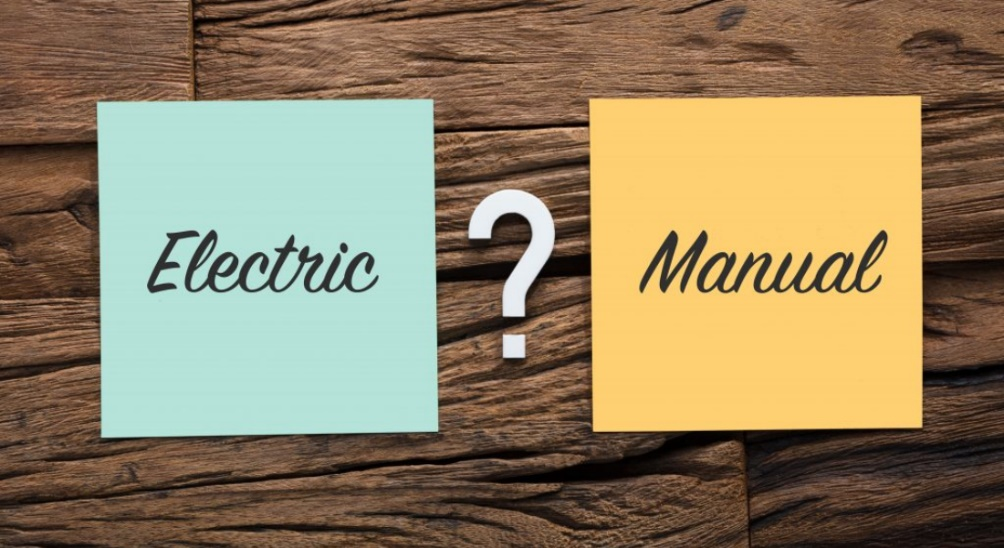
Along with the size of the frame you need to decide how much manual labor you want to do! There are 3 types of standing desks, Manual, Pneumatic, and Electric. Manual desks are raised, lowered, and locked into position using a hand-operated crank. The convenience of an electric desk that adjusts automatically is indisputable. But some users may get tired after 5 minutes of standing and sit back down because it is so easy to adjust. A manual desk user may reconsider, given the work and precision necessary to adjust the desk.
The manual desk is also more cost effective since the electric desk has more moving parts that could potentially need replacing in the future. There is also a benefit to not being electrical in that if the power goes out, you are out of luck. Pneumatic Standing Desks use a counterbalance mechanism that is operated when you release a lever, and it moves up and down. There are no extra cords with a pneumatic desk, you also do not need to worry about electricity. And it can raise and lower in less than 3 seconds!
With the electrical standing desks, you have a number of beneficial features you cannot get with the pneumatic and manual desks. There are wider variety of height adjustments with just the click of a button. You can stop the desk at any point and try that height for a moment. For instance, if you are not comfortable, you can simply press the up or down button as opposed to the manual option. Many people love the fact that they can program sometimes several settings so that with one press of the button you can automatically adjust the height instead of guessing every time. The electric desks are also more ergonomic than the fixed-height desk since they can be adjusted so easily. As an added bonus feature, the electric desk can lift heavy equipment such as a sewing desk, music studio or gaming equipment for instance.
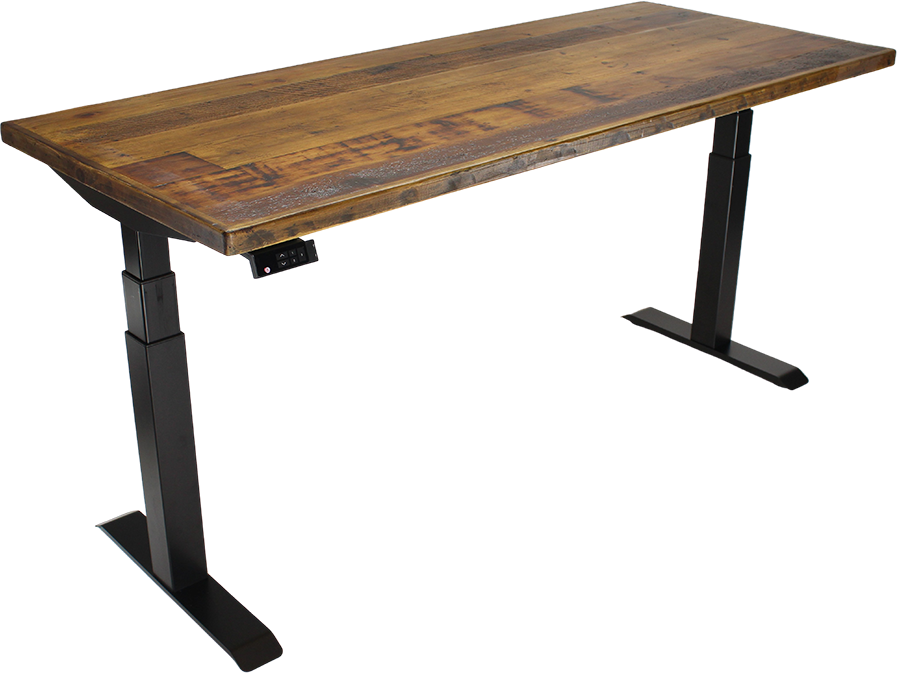
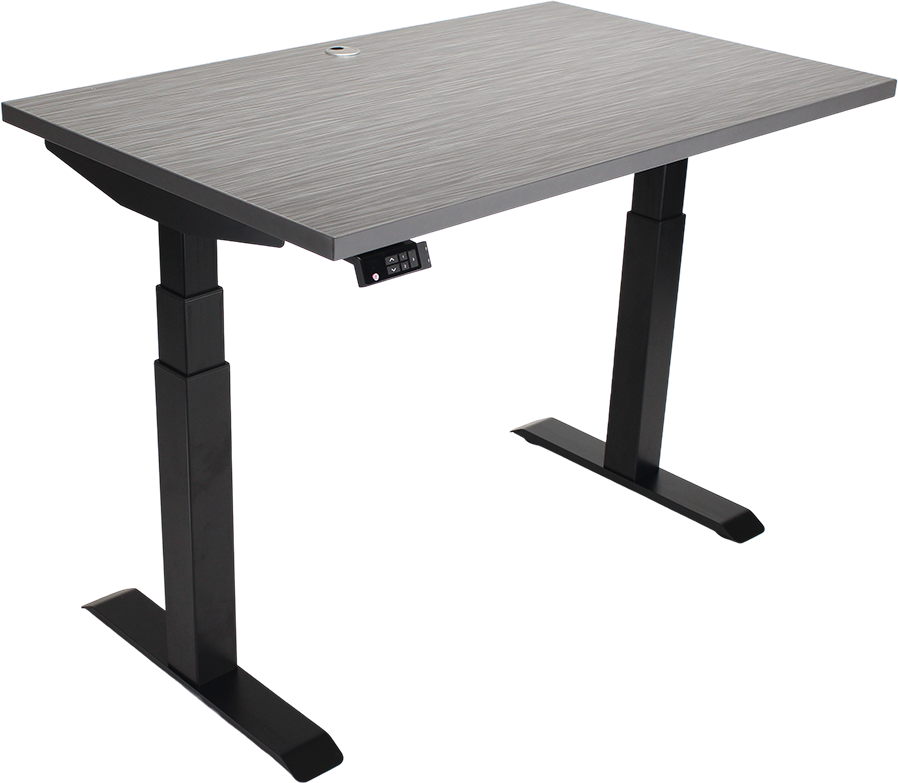
The Look
So, you have decided what height and size you want your desk to be, but what do you want it to look like as far as material and color? There are 7 different types of tops for your stand-up desk- MDF, Powdercoat, Laminate, 3D-Laminate, Reclaimed Wood, Hardwood, Veneer and Plywood. The two main types are laminated desktops and solid wood desktops. As you shop around for a standing desk you will find a multitude of desktops that each manufacture thinks are the best. Who knows which one is best for you? Do you need something super sturdy or are you just going to be putting a couple monitors on it? Here is a quick reference guide on how to pick the one that is best for you. Laminated desktops have been around since for at least the last 50 – 60 years.
What is lamination you ask? It is the technique of manufacturing a material in multiple layers to help the desk attain strength and durability, as well as other properties from the use of differing materials. Lamination is a popular choice in a lot of office furniture because it is aesthetically pleasing. Laminates are bonded to a wood product using adhesives, pressure, and temperature. The most common types of laminates are Melamine, Formica, and Wilsonart. One of the most popular surfaces is a High-Pressure Laminate or HPL. A large amount of office furniture is made with HPL surfaces. HPL is built by bonding a laminate to the top and bottom of a rectangular plank of MDF. A quite common feature of the HPL desktop putting a band on it. It is made by gluing some sort of edge banding to all four edges on the plank.
The only downside is that the strips of banding can come off since the glue dries out over time. 3D Lamination is film, sometime known as thermofoil, that wraps around a MDF plank that has already been shaped. These tops usually have rounded corner features and are sometimes called “ergo-contoured.” There is quite a range in quality with 3D Laminated tops. There are differences in many of them from surface texture to image quality and general durability. 3D laminates come in hundreds of solid colors as well as wood grain.
For a less expensive alternative, you can get a desktop made of MDF or Medium Density Fiberboard. To clarify, MDF is made by recycling scraps of wood by grinding them down to uniform particles, adding chemicals to make them stick together, and then pressing it into a strong piece of wood using high temperature and pressure. The board is heavier with the more wood fiber it has in it. If you are the type that likes to reduce your carbon footprint, this might be a good choice for you since it is made from recycled wood. MDF is very stable and can be painted but it cannot be stained like real wood. The main drawback to MDF is that it is susceptible to water damage.
Another type of surface is a powder coated desktop. This is the least expensive way to laminate a piece of MDF. Powder coating is a fancy name for spray-painting the wood. The “spray paint” only comes in solid colors. However, powder coated tops are very prone to damage because they add hardly any protection from scratches, dents, or cleaning chemicals. This is not one of the more practical surface options.
Solid wood desktops are becoming increasingly popular as more people purchase standing desks. Many are used to sitting at a tradition real wood desk, so they want to continue to use the same surface. Lacquers and sealants can be applied to help protect it from damage. If it does get damaged, real wood can be refinished unlike 3D laminate. Reclaimed wood desks are extremely popular right now because they give a rustic look but still look professional. Hardwood and Natural wood are often confused as being the same wood. Hardwood is made from dicot trees.
Accessories
Now that you have a complete education of desktop materials, let us discuss what accessories or features you would like your desk to have. Do you want a keyboard tray, storage, and place for your mouse? Have you thought about where you closest outlet will be to where you plan to sit and stand? How do you want your monitor? Monitors can be placed either on a traditional stand or they are often mounted on a mounting arm now. This allows for more surface space. Another advantage is that you can move the monitor around for a co-worker to see the screen without the person having to go around behind the screen.
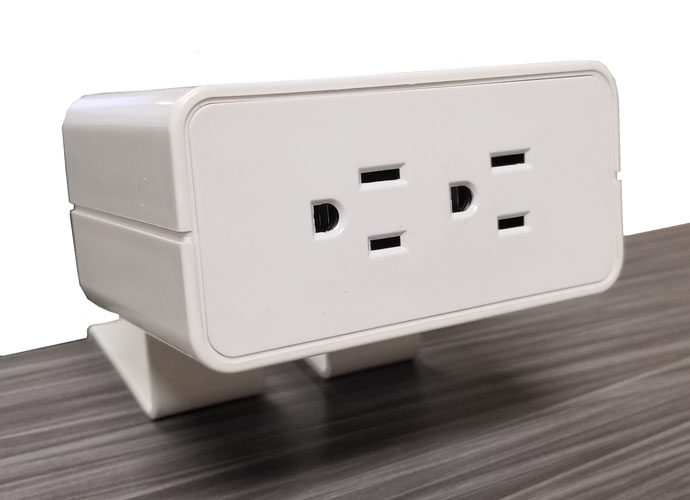
These are all important things to consider when pricing a sit to stand desk. Another item that many highly people highly recommend is a desk mat otherwise known as an “Anti-Fatigue Mat.” These mats are the ones you see at the employee at the checkout line in the grocery store. Recently the variety of offerings has greatly increased. There are ones with roller balls in the middle of the mat to help with movement. One mat offers the following features: Raised power wedge to stretch your calves, legs and ankles. A Support Track to rotate and stretch the balls of your feet and arches. A Balance Bar to do yoga stretches and general balance. An acupuncture pressure peak for massage your feet and massage mounds to massage the insoles of both feet!
In conclusion, this wraps up “Standing Desk 101.” For more information and to choose the best desk for you please visit Office Furniture America at www.officefurnitureamerica.us.
